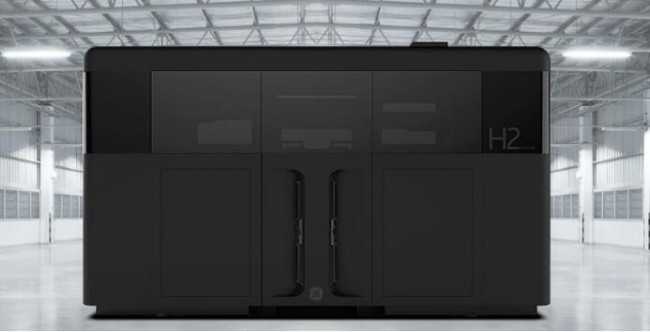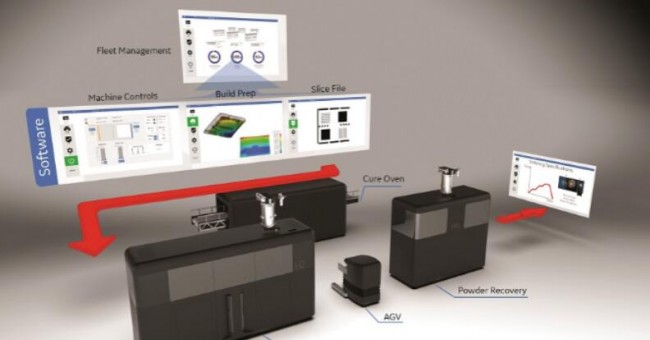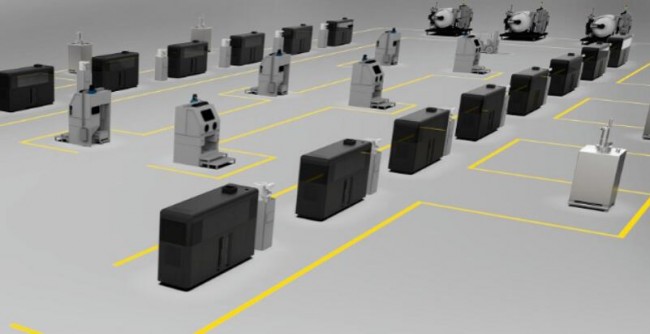With the exception of aerospace and medical, most industries are struggling to find opportunities to produce economically viable metal additive manufacturing industries. Given issues such as technology and process complexity, the need for quality control processes, and the learning curve associated with any new technology, the challenges of advancing additive manufacturing into industrialization are not one company can face. and fully resolved. For mass production, GEBinder Spray Metal3D printingA partnership program was launched to jointly develop and share knowledge to fully realize the transformative benefits of additive manufacturing.
Innovation comes from the combination of upstream and downstream
![]() Funding to accelerate technology development
Funding to accelerate technology development
In recent years, metallurgy by binder jetting3D printingThe equipment has been favored by investors.From the investment market, a large amount of investment capital has entered into the binder injection due to the high speed, high volume and low cost factors. 3D printingfield, rising starDesktop Metal, Markforged, Digital Metal, etc. are all representative companies in this field.
Binder Spray Metal3D printingOutstanding advantages
- efficient
- economical powder
- No complex de-support requirements
GE announced its entry into binder jetted metal in 20173D printingtechnical field, and announced a prototype based on the binder jetting process3D printingequipment.Binder Spray Metal3D printingThe technology can quickly manufacture metal parts in a short time, so that the manufacturing cycle is significantly shortened, especially in the rapid manufacture of stainless steel and aluminum parts, which can compete with the casting process. The technology has potential applications in manufacturing industries that require rapid manufacturing of castings.
![]() Cooperation catalyzes the industrialization process
Cooperation catalyzes the industrialization process
For automated mass production, GE’s goal by forging partnerships is to compress the industrialization process of additive manufacturing for more than 20 years into three years. According to 3D Science Valley’s understanding, to this end, the cooperation process between GE and its partners will be divided into three stages:
Phase 1 goal is part development, by equipping 1-2 sets of binder jetting metal3D printingequipment, GE stationed design and engineering teams with partners to drive part development. By building prototypes, going into initial low-speed printing for testing, validation, monitoring OEE data to build the required platform for improvements, and finally adjusting to production needs for further development of equipment, software, binders, processes, and materials .
The goal of Phase 2 is to pilot the production line by equipping 4-8 binder jetting metal3D printingEquipment, build a model production line project with replicable scalability, and achieve platform maturity by monitoring the differences between equipment, scalability to optimize yield and production efficiency. In the process of realizing the maturity of the production line, more parts are developed at the same time, and automated concept testing is completed.
Phase 3 is targeting a factory-level solution to spray metal through a binder equipped with 12+ units3D printingEquipment, GE develops automation solutions with partners in each industry, and supports industrial development through software, GE customers can choose to build their own factories or outsource large-scale production to GE Additive’s early partners.
Review
Powder bed based selective laser melting of metals with PBF3D printingProcess compared to Binder Jetting3D printingThe technology has several key advantages: more economical powder materials (similar to metal powder materials used in the MIM process); no support structures required; efficient printing speeds suitable for high-volume production applications ranging from automotive and aircraft parts to medical applications .
Binder Jetting3D printingtechnology with almost every other metal3D printingThe craftsmanship is unique because in the3D printingThe process does not generate a lot of heat.This enables high-speed printing and avoids metal3D printingResidual stress problems in the process.
Binder jetting3D printingThe technology is to produce full density metal parts through a combination of material jetting and sintering processes. Lower-cost equipment also means significantly lower parts costs, and high-volume lower-cost parts are a key element in moving toward production.Binder Spray Metal3D printingThe technology has the potential to replace low-volume, high-cost metal injection molding, and can also be used to produce complex and lightweight metal parts in other fields (such as gears or turbine wheels), significantly reducing3D printingcosts and shorten lead times.
![]() Simulation Unleashes Industrialization Possibilities
Simulation Unleashes Industrialization Possibilities
But Binder Jetting3D printingTechnology Due to part shrinkage that occurs during sintering, compensation is required to account for distortion. Simulation software tools can better simulate and predict compensation schemes and then adjust part geometry accordingly.According to 3D Science Valley, in this regard, includingSimufactand other software introduced metal binder jetting simulation technology to achieve mass production.
Real-time simulation aspects of ANSYSDiscovery LiveThe platform allows changes to be made to CAD models to show how fluid or air flow is affected in real-time and can be used by anyone, not just experts. Discovery Live allows engineers to instantly examine the impact of their design changes, a platform that supports fluid, structural and thermal simulation applications. This allows designers to interactively explore the impact of simple and complex changes, making iteration faster and easier.
With the development of simulation technology for the metal binder jetting process, the binder jetting metal will be released3D printingThe development potential of technology, in the future, the mold, casting, and metal injection industries will be the first to be affected by Binder Jetting.3D printingThe impact of technology, and the automotive industry may be the first to directly benefit from Binder Jetting3D printingThe development and application of technology.
(responsible editor: admin)





0 Comments for “GE Binder Jet Metal 3D Printing Launches Partner Program for Industrial Mass Production”